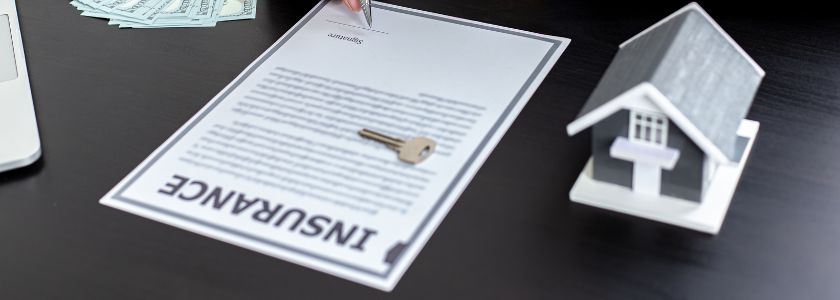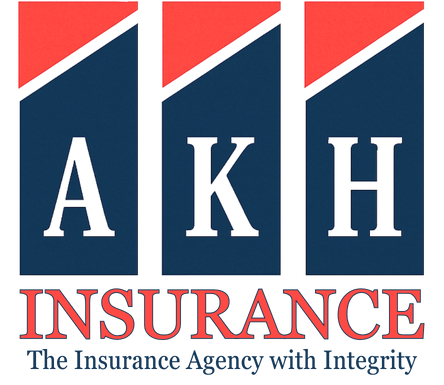Property vs. Casualty Insurance: Key Differences Explained

Trying to understand the difference between property and casualty insurance? You’re not the only one. They’re often bundled together, but they cover very different things. Property insurance protects your physical assets—like your home, car, or business equipment—while casualty insurance covers you when you’re legally responsible for something, such as an accident or injury.
Understanding the difference helps you choose the right coverage and stay protected when the unexpected happens. In this guide, we’ll explain how insurance services work, where they overlap, and why having both could be essential.
What is Property Insurance?
Property insurance provides financial protection for your physical assets. If your home, vehicle, or business property is damaged or stolen, this coverage helps cover the cost to repair or replace it.
What does it Cover?
Property insurance typically protects against:
- Natural disasters: Fire, windstorms, hail
- Theft or vandalism: Break-ins, stolen belongings
- Accidental damage: Burst pipes, fallen trees
For example, if a kitchen fire damages your home, property insurance covers repairs. Also, if a storm destroys your business’s roof, a commercial property insurance policy would pay for replacements.
What Doesn’t it Cover?
Property insurance doesn’t cover legal claims. If someone slips on your icy sidewalk or you’re at fault in a car accident, that’s where casualty (or liability) insurance comes in—more on that later.
Common Types of Property Insurance
Homeowners/Renters Insurance
This covers your dwelling (house or apartment) and personal belongings against risks like fire, theft, or storms. Homeowners’ policies also include liability protection, whereas renters insurance focuses on personal property. For example, if a burst pipe ruins your furniture, this policy helps pay for replacements. Always check coverage limits for high-value items like jewelry.
Auto Comprehensive Coverage
Unlike collision insurance, which covers accidents involving other vehicles or objects, comprehensive coverage covers non-collision damage. That includes theft, vandalism, hail, falling objects, or even hitting an animal on the road. If a tree branch falls on your car or someone steals your catalytic converter, it kicks in. While it’s optional, it’s a smart choice—especially for newer vehicles.
Commercial Property Insurance
Commercial property insurance helps protect the physical parts of your business—like buildings, equipment, inventory, and signage. For example, a restaurant’s policy might cover a kitchen damaged by fire, while a retailer’s could replace stolen merchandise. Some policies also include business interruption coverage to help recover lost income during repairs or downtime.
To recap, property insurance helps protect the physical things you own—from your home to your business inventory. But what happens when the risk isn’t damage to your property but a lawsuit over harm you might cause to others? In the next section, let’s break down how casualty insurance works—and why it’s just as critical in protecting your assets.
What is Casualty Insurance?
If property insurance protects your physical assets, casualty insurance shields you from financial fallout when you’re legally responsible for injuries or damages to others.
How Casualty Insurance Works
Casualty insurance steps in when:
- Someone gets hurt on your property (like a guest slipping on your stairs)
- You cause damage to others’ property (e.g., rear-ending another car)
- Your business faces liability claims (such as a customer suing over an injury)
This coverage helps pay for medical bills, legal fees, and settlements—potentially saving you from devastating out-of-pocket costs.
Common Types of Casualty Coverage
General Liability Insurance
General liability insurance protects your business from third-party claims involving bodily injury, property damage, or personal injury. If a customer slips in your store or you accidentally damage a client’s property, this coverage can help with legal fees, medical bills, and settlements. It’s a core part of most commercial property and casualty (P&C) insurance packages and helps protect against common, everyday risks.
Auto Liability Insurance
Auto liability insurance is a legal must-have in most states if you’re driving for business or personal use. It covers the other party’s medical bills and vehicle repairs if you’re at fault in an accident, but it won’t cover damage to your own vehicle (that’s collision/comprehensive insurance). Commercial auto liability is especially important for businesses with fleets or employees behind the wheel.
Professional Liability Insurance
Also known as errors and omissions (E&O) insurance, this coverage protects service providers against negligence claims. Doctors, consultants, and contractors often rely on it when clients allege mistakes, missed deadlines, or unsatisfactory work. Unlike general liability insurance, it covers financial losses—not physical injuries—which makes it especially important for knowledge-based industries.
Workers’ Compensation
This covers employee work-related injuries/illnesses and is mandatory for employers in most states. It pays for medical care and lost wages while protecting businesses from lawsuits. Even office jobs need it, as employees are susceptible to conditions such as carpal tunnel syndrome or injuries from slips within common areas.
Umbrella Insurance
This extends liability limits when other policies max out. If a severe car accident or lawsuit exceeds your auto or general liability coverage, umbrella insurance kicks in. It’s cost-effective extra protection for both individuals and businesses with significant assets to safeguard.
The Commercial Angle
Businesses face risks from both their physical assets and legal exposure, which is why commercial property and casualty insurance (often called commercial P&C) is essential. Unlike personal policies, these bundled solutions are particularly valuable for operations facing multiple risks simultaneously.
Example: For a retail store, the property component would cover physical losses like fire damage to inventory or storm damage to the building, while the casualty portion would handle liability claims if a customer were to slip on a wet floor and file a lawsuit.
Although property and casualty insurance address different risks, they share one goal: to protect your finances when you’re legally on the hook. In the next section, let’s compare property and casualty insurance side-by-side and how they work together, especially in commercial property and casualty insurance bundles.
Property vs. Casualty Insurance
Wondering what is the difference between property and liability insurance? While both are core components of risk management, they protect against entirely different threats. Let’s break down their differences and where they occasionally overlap:
How They Differ
| Property Insurance | Casualty Insurance | |
| What They Cover | Protects physical assets you own (homes, cars, business inventory) from damage or theft). | Covers legal responsibilities when you’re at fault for injuries or damage to others (e.g., lawsuits after a car accident or customer injury). |
| Who Benefits | Property Insurance reimburses you for losses to your belongings. | Casualty Insurance pays others (claimants) when you’re liable. |
| Common Policies | Homeowners, auto comprehensive, commercial property. | Auto liability, general liability, malpractice insurance. |
Where They Overlap
Some policies combine both coverages. These hybrid solutions recognize that real-world risks rarely fall into neat categories—properties face physical damage threats while their owners simultaneously need liability protection.
- Homeowners Insurance
A standard homeowners policy perfectly illustrates this combination. The property component covers the physical structure of your home and personal belongings against perils like fire, theft, or storm damage. Simultaneously, the casualty portion protects you if someone gets injured on your property and decides to sue.
Example: If a guest slips on your icy driveway, the liability coverage will handle their medical bills and your legal defense costs. This dual coverage explains why homeowners insurance is often considered a foundational financial safety net.
- Business Owner’s Policies (BOP):
For small to mid-sized businesses, a BOP offers similar combined protection at scale. It packages:
- Commercial Property Insurance for buildings, equipment, and inventory
- General Liability Insurance for customer injuries, product issues, or advertising mistakes
Many BOPs also include business interruption coverage, creating a comprehensive shield against physical and financial risks. Bundled policies make it easier to manage coverage and often reduce overall insurance costs. Insurers often offer better rates for packaged coverage than for separate policies.
More importantly, they prevent dangerous coverage gaps that could leave individuals or businesses vulnerable when a single incident triggers both property damage and liability claims (like a tree from your property falling on a neighbor’s car).
Commercial C&P Insurance: Special Considerations
Now that you know the fundamentals, let’s focus on C&P insurance. Unlike personal policies, commercial coverage addresses complex liabilities and high-value assets unique to business operations.
What Makes Commercial P&C Different?
Commercial P&C distinguishes itself from basic coverage with three critical distinctions:
- Higher Coverage Limits
Commercial C&P insurance must account for potentially catastrophic losses, unlike personal policies with standard limits. A homeowner’s policy may have a liability limit of $300,000, while a mid-sized business may require $5 million or more in coverage due to the potential for significantly higher losses.
Example: A boutique hotel needs enough liability coverage to handle guest injury claims while carrying property coverage for high-value furnishings and building systems.
- Specialized Endorsements
Standard policies leave dangerous gaps for specialized operations. That’s why commercial P&C insurance offers endorsements like:
- Cyber Liability Add-ons for data breaches (critical for healthcare providers or retailers)
- Equipment Breakdown Coverage for manufacturing plants
- Liquor Liability for bars/restaurants
- Professional Liability for consultants and service businesses
These aren’t just checkboxes but survival tools. A tech startup without cyber endorsements could face bankruptcy after a single data breach. Also, contractors without “tools floater” coverage might struggle to replace stolen equipment.
- Business Continuity Features
The most overlooked yet vital component of commercial insurance is that it keeps cash flowing after disasters. Unlike personal policies, quality commercial C&P often includes:
- Business Interruption Insurance – replaces lost income during closures
- Extra Expense Coverage – pays for temporary relocation/operations
- Extended Period Indemnity – continues coverage during slow reopenings
Example: After a fire, a bakery’s property insurance would rebuild the shop, but only business interruption coverage would replace the lost income during those six months of reconstruction.
Do You Need Both?
The short answer is YES.
Property and casualty insurance work together like a security system and a legal defense team—one protects your physical assets, while the other shields your finances from lawsuits. A single incident (like a fire or customer injury) could threaten your assets and trigger costly liability claims. Without both coverages, you’re gambling with your company’s future.
Don’t wait for disaster to expose your coverage gaps. Contact us to discover how our comprehensive insurance solutions protect both your assets and bottom line.
